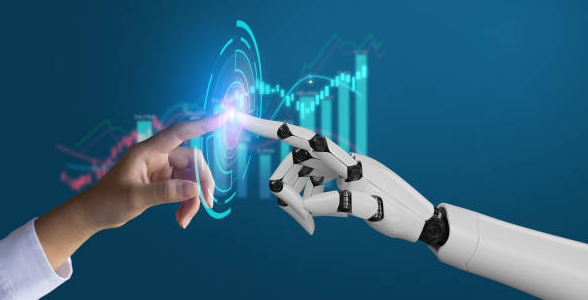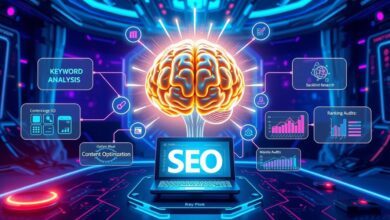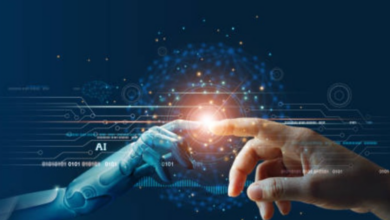
Without a powerful database, it’s hard to imagine an efficient AI and machine learning system. Among others, databases are integral for organizing, storing, and accessing data, which can be used to create AI models.
Unfortunately, there’s one glaring issue with databases for machine learning – There are simply too many of them! Choosing the right one is tricky, and, to make matters worse, this decision can affect the success of the entire project. Among others, you need to consider multiple factors such as ease of use, large dataset processing, scalability, price, integration options, and compatibility with blended learning methodologies.
To help you out, we’ve made a breakdown of different types of databases, their main features, and which one would be the best for your particular case.
Factors when choosing a database
Using regular data sources is virtually impossible if you’re running a large business. Traditional analytics tools can’t handle that much data, so companies need to turn to databases for storing and accessing. When choosing a database for ML model creation, you need to pay attention to various factors, out of which the most important are:
- Performance
The popularity of any database hinges on its performance. As AI and ML models rely on large quantities of data, the need for high performance is highlighted. The right database should process all this data in the blink of an eye while making it accessible in different formats. If the query processing is too slow, there will be major hiccups during ML model training and prediction.
- Scalability
For machine learning models to be effective, they should be able to access large quantities of data and process it. Because of that, you need to choose solutions with a high degree of scalability, in other words, databases that can potentially tackle increasing loads. If a database doesn’t have good scaling potential, it will start slowing down as the requirements increase.
- Data integrity
For artificial intelligence and machine learning models to work, they need access to a large quantity of reliable data. There shouldn’t be any errors in terms of consistency, accuracy, or completion. In other words, data integrity is vital for final results and will affect how the general public perceives a model.
Using databases for AI and machine learning
As mentioned, a powerful database is at the front and center of any machine learning project. On the other hand, machine learning can be utilized for various tasks, including ML in marketing personalization, ML in fraud detection, and ML in cybersecurity. By proxy, your database of choice also has a major impact on all of these processes.
Main database classification
Interestingly enough, there aren’t many database solutions that can be utilized for AI and machine learning. For the most part, it comes down to three types:
- Graph databases: These digital solutions allow you to create relationships between different data and categorize them into edges and nodes. As such, they are ideal for situations where you need to determine links between data. Graph databases also provide fantastic performance and scalability for companies
- Relational databases: With this category, you can place data into large tables with numerous columns and rows that uniquely classify entries. The best thing about them is that they’re easy to use, even if you’re a beginner. As if that wasn’t enough, relational databases offer high accuracy and security while simplifying collaboration
- NoSQL databases: This type of database is ideal for specialized data, like images, videos, and specific texts. Experts use them for machine learning projects as they can streamline large quantities of data and provide enormous scalability. Not only are NoSQL databases developer-friendly, but you can also update them with minimal effort
Database features for machine learning
A database must fulfill several criteria to be a good choice for the development of machine learning systems. Here are the main features you should look for during the selection process:
- Scalability: The reason why machine learning systems are so powerful is because they rely on large volumes of data to execute tasks. That being said, your database must match these requirements and be highly scalable
- Performance: Another major perk of machine learning is that it’s lightning-fast. With the right database, your ML systems can achieve better performance while handling complex queries with ease
- Integrations: Most modern programs allow a high degree of integration and customization. ML and AI systems are no different, so you’ll need a database that enables numerous integrations with other technologies and apps
- Security: Given the number of global cyber-attacks in the last several years, your database needs to be secure enough to house ML solutions
Popular databases for machine learning
As mentioned, so many databases can be utilized for AI and ML. However, for this article, we decided to focus on the few best ones:
- NebulaGraph: There’s little NebulaGraph database can’t do when it comes to machine learning. The graph database can easily establish relationships between different data, and it also provides excellent performance and scalability
- MySQL: One of the most famous open-source database management systems, MySQL is used by numerous corporations, including Uber, YouTube, Facebook, and Twitter. With MySQL HeatWave AutoML, you have all the necessary features for creating, training, and deploying machine-learning models
- MongoDB: Like any NoSQL database, MongoDB can handle large volumes of unstructured data. If we consider its high-speed querying, flexible data model, and indexing, this is the perfect database for AI and ML
- PostgreSQL: Experts love using PostgreSQL for machine learning models. By utilizing this database, you can execute all sorts of tasks, including text classification, regression analysis, image classification and recognition, and time series predictions
- Redis: Lastly, let’s mention a few positive things about Redis. This database is popular for its fantastic real-time data processing and caching, making it a solid choice for developing machine-learning models
In most cases, the optimal database will vary based on your specific needs. So, make sure to try out different options before committing to one of them.







